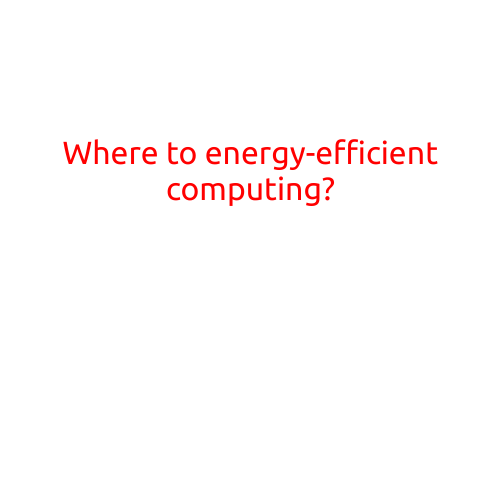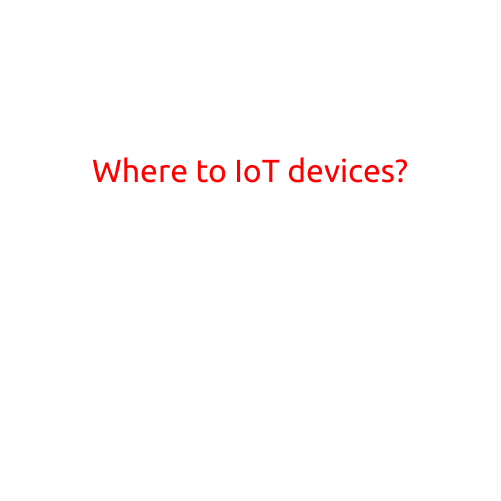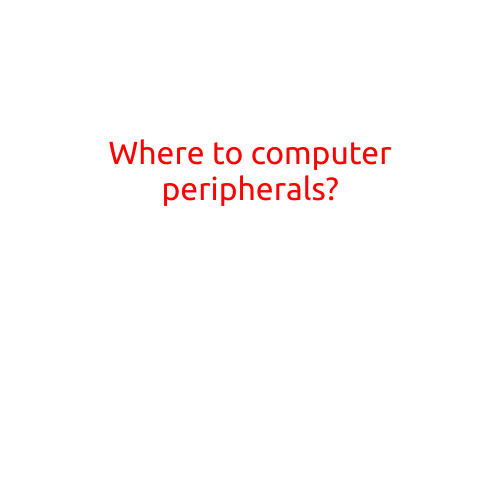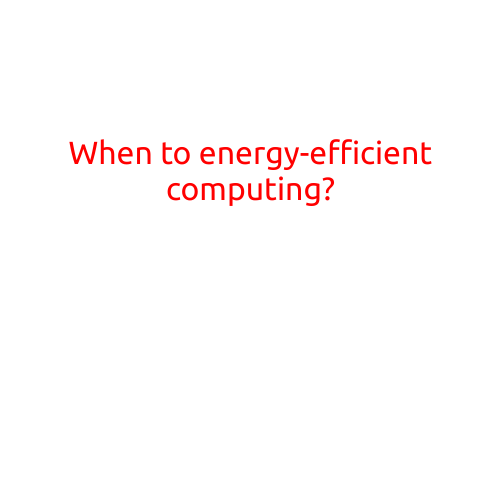
Where to Look for Energy-Efficient Computing
In today’s digital age, computing is an essential part of our daily lives. From smartphones and laptops to data centers and supercomputers, energy efficiency has become a major concern for both personal and environmental reasons. As technology advances, energy-efficient computing is becoming increasingly important for reducing energy consumption, lowering costs, and minimizing environmental impact.
Data Centers and Cloud Computing
Data centers, which house the servers that power cloud computing services like Amazon Web Services (AWS) and Microsoft Azure, are some of the largest energy consumers in the world. A single data center can consume enough energy to power a small town. However, data center operators are making a concerted effort to improve energy efficiency. Some ways they’re doing this include:
- Using servers with high efficiency processors that consume less power
- Implementing advanced cooling systems that reduce energy consumption by up to 40%
- Utilizing renewable energy sources like solar and wind power
Smartphones and Laptops
Our personal devices, such as smartphones and laptops, are also major energy consumers. However, there are many ways to make them more energy-efficient:
- Look for devices with low-power processors and displays
- Use power-saving features like battery-saving modes and auto-brightness settings
- Turn off devices when not in use to avoid standby power consumption
Energy-Efficient Devices
Several companies are developing energy-efficient devices that are designed to minimize power consumption while still providing excellent performance. Some examples include:
- Intel’s Ultrabook laptops, which use low-power processors and advanced power management systems
- Google’s Chromebooks, which are designed to be lightweight and energy-efficient
- ARM-based servers, which use low-power processors and are designed for cloud computing and data center applications
Challenges and Opportunities
While energy-efficient computing is becoming more important, there are still several challenges to overcome:
- Higher upfront costs for energy-efficient devices and data centers
- Limited availability of energy-efficient options in certain categories
- Need for continued innovation and advancements in energy-efficient technologies
Despite these challenges, there are many opportunities for energy-efficient computing to make a significant impact:
- Reduced energy consumption and costs for individuals and businesses
- Lower environmental impact through reduced greenhouse gas emissions
- Increased adoption of cloud computing and data center services
- Continued innovation and advancements in energy-efficient technologies
Conclusion
Energy-efficient computing is an essential aspect of our digital future. From data centers to smartphones and laptops, there are many ways to make computing more sustainable. By understanding where to look for energy-efficient options and continuing to innovate and advance in this field, we can reduce energy consumption, lower costs, and minimize environmental impact. Whether you’re an individual or a business, the benefits of energy-efficient computing are clear, and it’s an area that’s worth paying attention to in the years to come.





